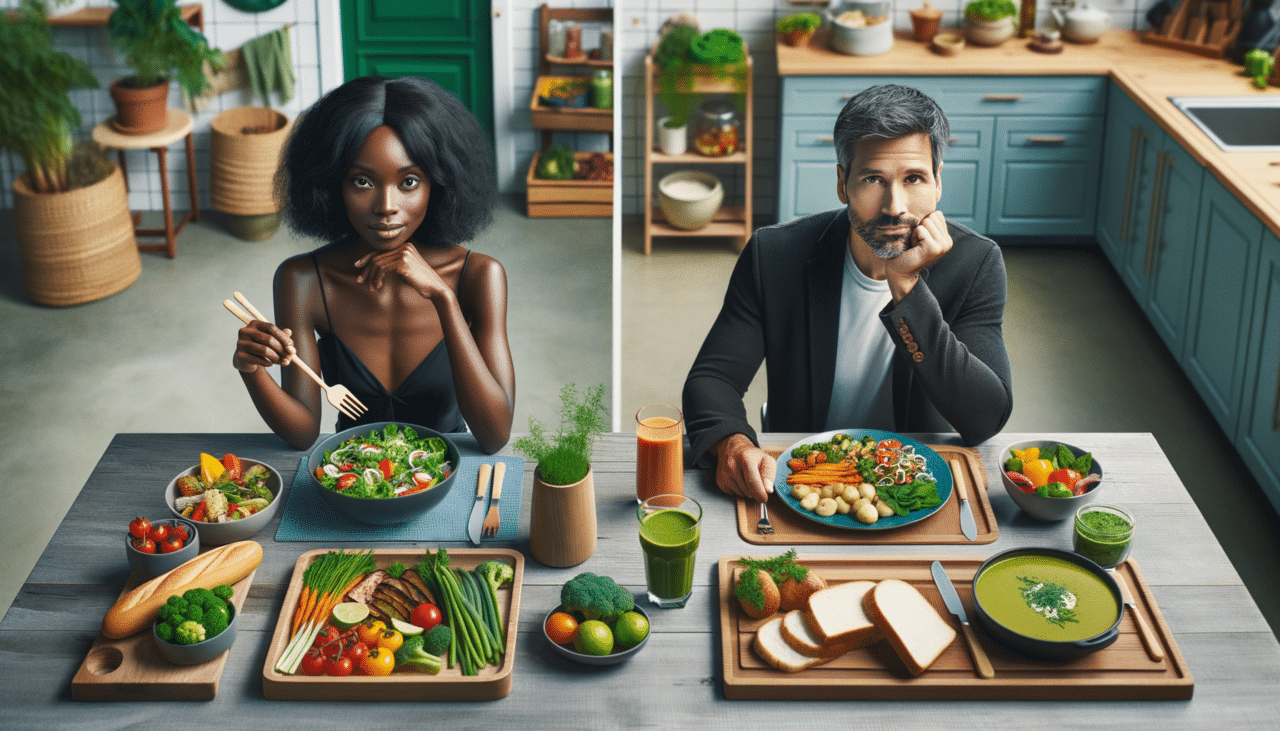Exploring the Verdant Divide: Greens-Rich Diet vs. Greens-Poor Diet
In the heart of bustling Cairo, where the tantalizing aromas of spices dance through the air, I found myself seated with Amal, an old friend and a renowned nutritionist. As we sipped on our mint tea, the conversation turned to the vibrant world of greens, those emerald gems that have been a staple in diets from the lush banks of the Nile to the sun-drenched fields of the Maghreb. Today, we embark on a journey to explore the significant differences between a Greens-Rich Diet and a Greens-Poor Diet, unraveling the threads of health, culture, and lifestyle that weave through each.
The Tale of Two Diets
Greens-Rich Diet
A diet abundant in greens is like an ode to nature’s bounty. It brims with leafy vegetables such as spinach, kale, and arugula, offering a symphony of flavors and a treasure trove of nutrients. Picture a vibrant salad dancing with colors, a generous helping of tabbouleh glistening with fresh herbs, or a hearty molokhia stew, its rich green hue inviting you to savor every bite.
Characteristics:
- Nutrient-Dense: Packed with vitamins A, C, K, and an array of B vitamins, greens are not just leaves; they are powerhouses of nutrition.
- Rich in Antioxidants: These verdant vegetables are laden with antioxidants, crucial for combating oxidative stress and promoting cellular health.
- Fiber-Loaded: With every crunchy bite, greens offer a generous dose of dietary fiber, essential for digestive health and maintaining a healthy weight.
- Low in Calories: Perfect for those mindful of their caloric intake, greens satiate without adding extra pounds.
- Versatile: From hearty soups to fresh salads, the culinary possibilities are endless, each dish a celebration of flavor and health.
Greens-Poor Diet
In contrast, a Greens-Poor Diet is reminiscent of a barren landscape, where the vibrant hues of vegetables are sparse, and plates are often dominated by starchy staples and proteins. Such a diet might echo the hustle and bustle of Cairo’s streets, where time is short, and convenience often trumps nutrition.
Characteristics:
- Limited Nutrient Intake: Without the abundance of greens, there is a notable lack in essential vitamins and minerals, potentially leading to deficiencies.
- Lower Antioxidant Levels: A diet with fewer greens lacks the protective benefits of antioxidants, making the body more susceptible to oxidative damage.
- Reduced Fiber Content: With limited fiber intake, digestive issues may arise, and maintaining a healthy weight becomes challenging.
- Higher Caloric Density: Meals are often more calorie-dense, which can lead to weight gain if not balanced with physical activity.
- Monotonous Flavors: The absence of greens can lead to a lack of variety in textures and flavors, making meals less exciting and enjoyable.
Comparative Table: Greens-Rich Diet vs. Greens-Poor Diet
| Aspect | Greens-Rich Diet | Greens-Poor Diet |
|---|---|---|
| Nutrient Content | High in vitamins A, C, K, B-vitamins | Limited vitamins and minerals |
| Antioxidant Levels | Rich in antioxidants | Lower antioxidant protection |
| Fiber Content | High fiber, promotes digestive health | Low fiber, may lead to digestive problems |
| Caloric Density | Low calorie, aids in weight management | High calorie, risk of weight gain |
| Culinary Variety | Diverse flavors and textures | Limited variety, less flavorful |
Conclusion
As Amal and I finished our tea, the conversation lingered on the importance of choice and awareness in our dietary habits. Whether you find yourself in the historic alleys of Cairo or the sprawling deserts of Saudi Arabia, understanding the profound impact of a Greens-Rich Diet versus a Greens-Poor Diet is essential. The vibrant greens that grace our tables are more than mere food; they are a testament to the rich tapestry of life that the Arab world treasures. Embrace them, and in doing so, embrace a life of health, vitality, and cultural richness.

Comments (0)
There are no comments here yet, you can be the first!